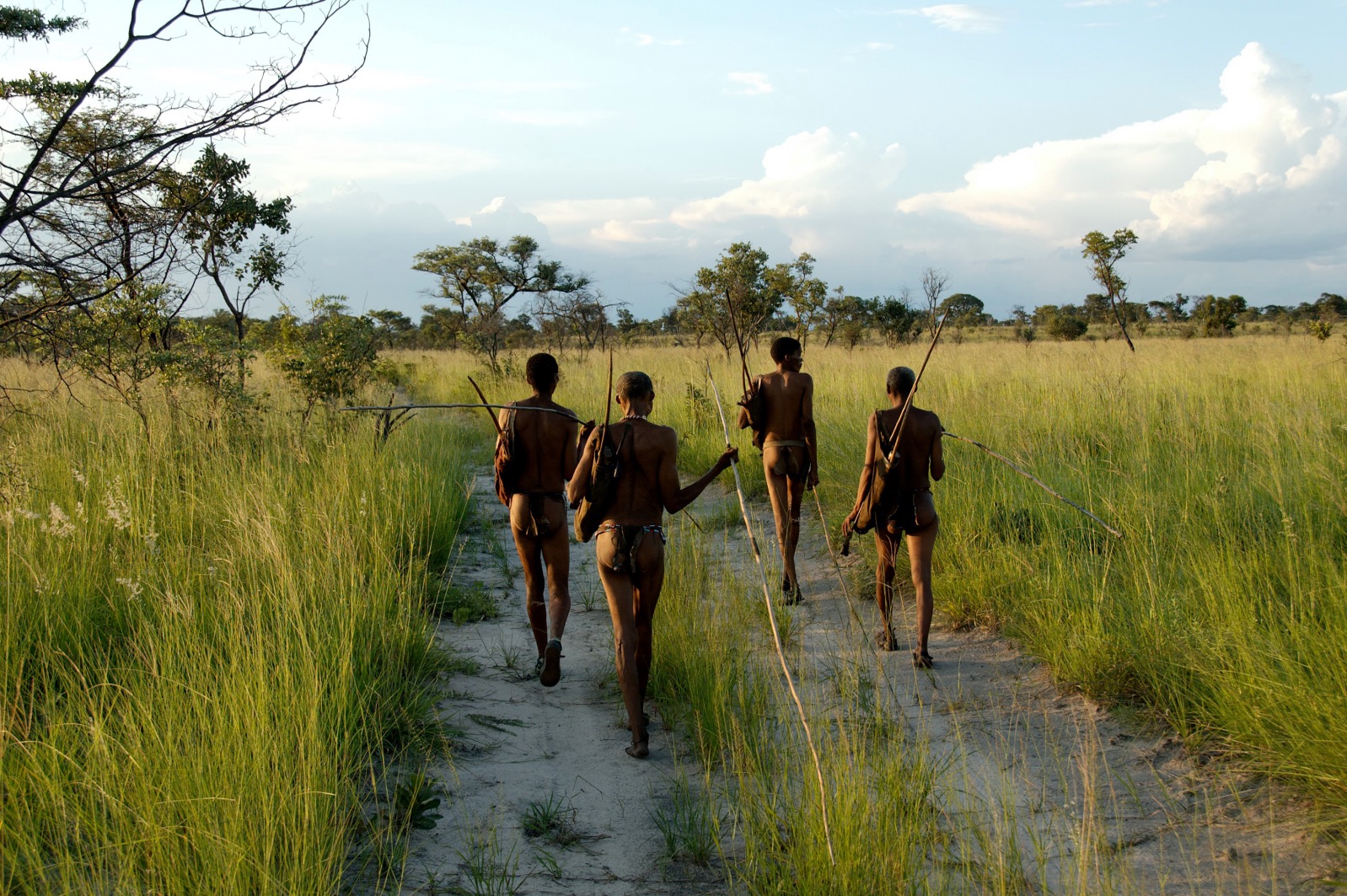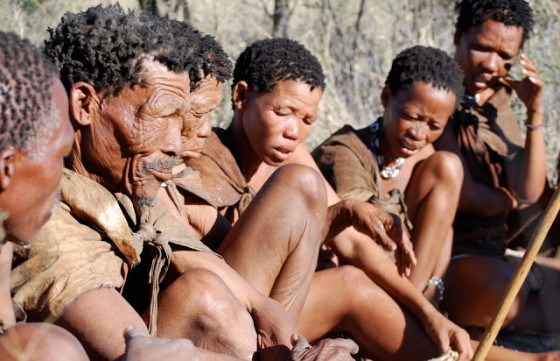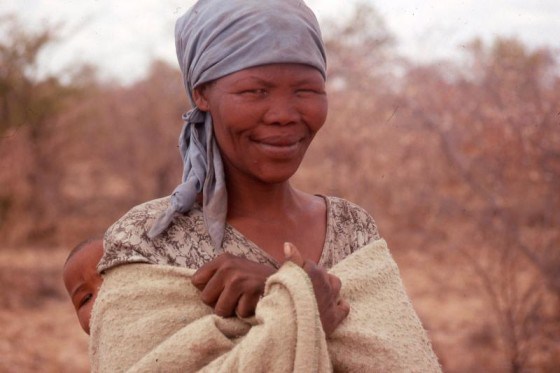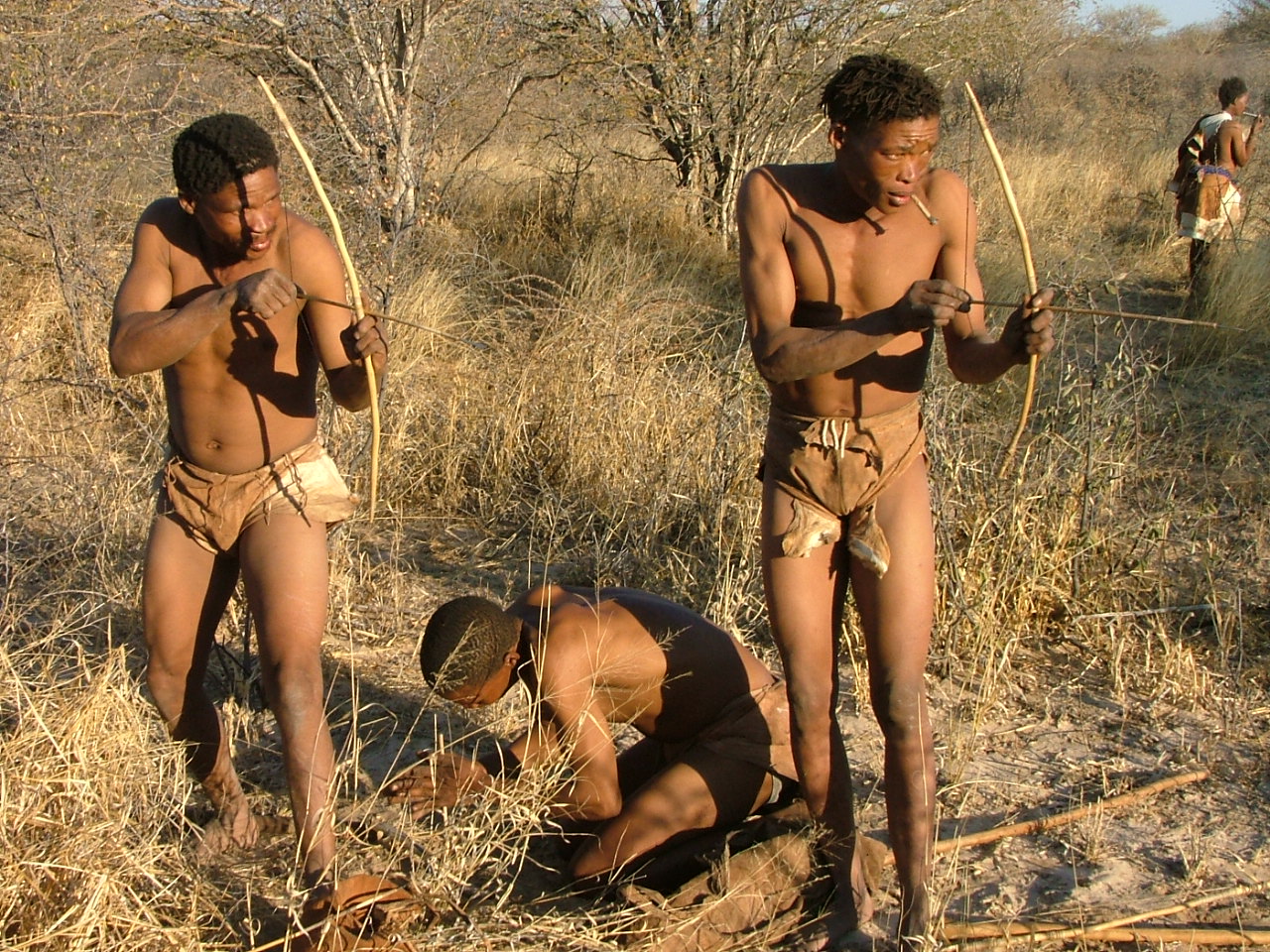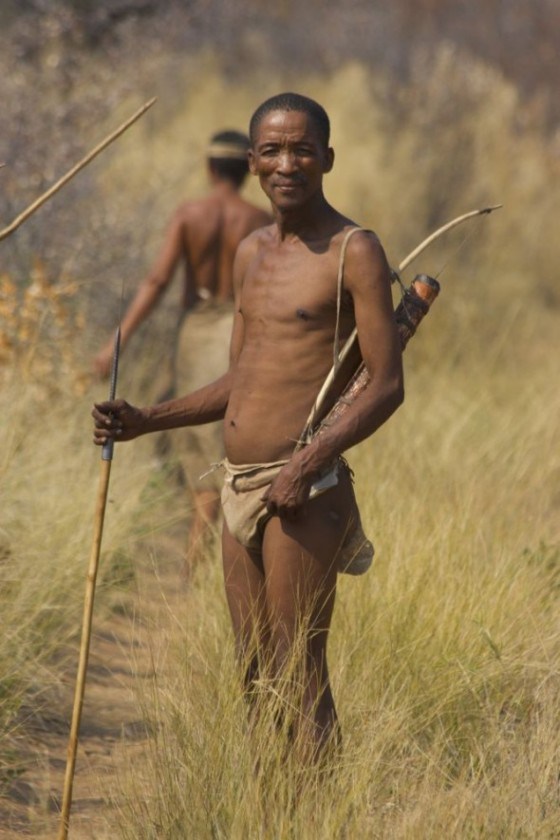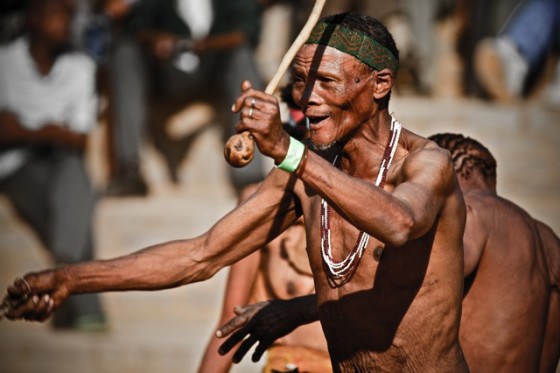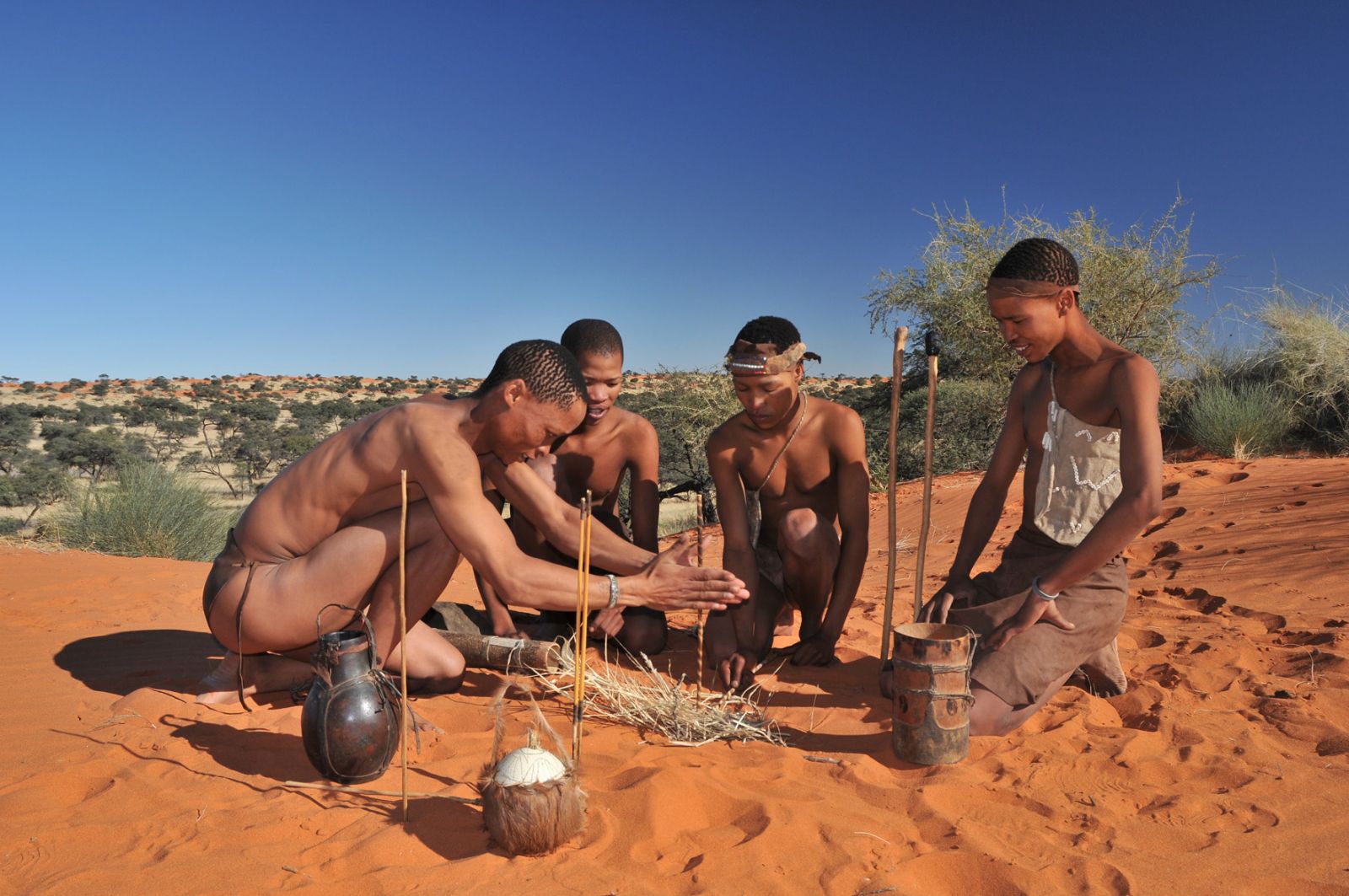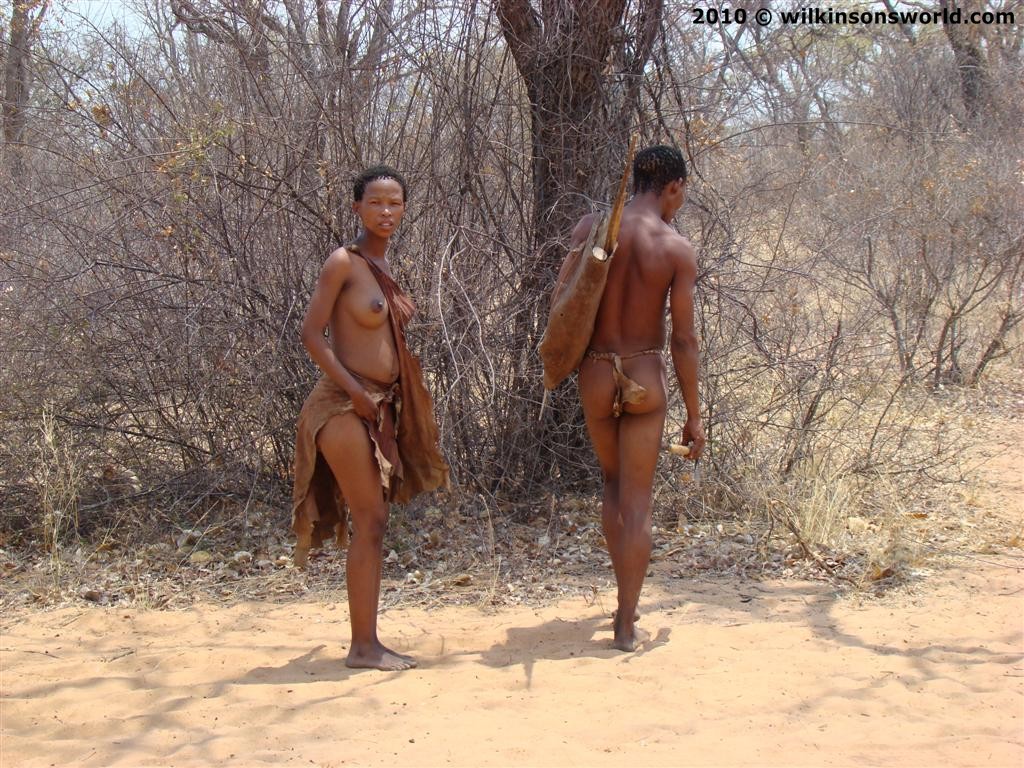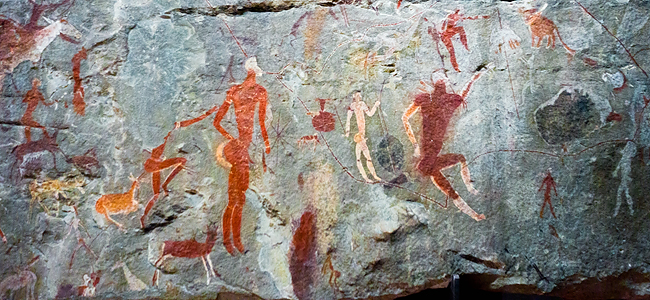If you’ve ever seen the popular 80s South African comedy film “The gods must be crazy” then you’ve had a glimpse of them.
These are the San ‘Bushmen’ also known as Khwe, Sho, and Basarwa. They are said to be the oldest inhabitants of southern Africa, where they have lived for at least 20,000 years.
The San Bushmen are a hunter-gatherer people of southern Africa. Genetic evidence suggests they are one of the oldest peoples in the world. Their home is in the vast and arid expanse of the Kalahari desert.
SCROLL DOWN FOR PHOTOS
Scientists say the Bushmen are a remnant of Africa’s oldest cultural group, genetically the closest surviving people to the original Homo sapiens “root” from which the Negroid people of Africa emerged. The bushmen are small in stature with light yellowish skin. They develop wrinkles very early in life. They traditionally lived in Southern African region in the following countries : Botswana, Namibia, South Africa, Zambia, Zimbabwe and Angola, with loosely related groups in Tanzania.
Recorded history also placed them in Lesotho and Mozambique. Rock art and archaeological evidence has placed them as far north as Libya, Egypt, Sudan and Ethiopia, with the evidence of legend & racial type suggesting some traces remain.
Bushmen is an English form of the word of boesman, the Dutch and Afrikaner name for them; saan (plural) or saa (singular) is the Nama word for “bush dweller(s),” and the Nama name is now generally favoured by anthropologists. Each of these terms has a problematic history, as they have been used by outsiders to refer to them, often with pejorative connotations.
Their individual groups identify by names such as Ju/’hoansi and !Kung (the punctuation characters representing different click consonants), and most call themselves by the pejorative “Bushmen” when referring to themselves collectively.
The term San was historically applied by their ethnic relatives and historic rivals, the Khoikhoi. This term means “outsider” in the Nama language and was derogatory because it distinguished the Bushmen from what the Khoikhoi called themselves, namely the “First People”. Western anthropologists adopted San extensively in the 1970s, and that term remains preferred in academic circles.
The San are said to be descendants of Early Stone Age ancestors. They are nomadic group living in temporary shelters, caves or under rocky overhangs. When the first Europeans settlers in 1652 arrived in Southern Africa,they exterminated the Sans as they sought new territory ,deeming them to be inferior like wild animals. They called them “Bushmen” and proceeded to wipe out 200,000 of them in 200 years. They also sold them in slave markets and to traveling circuses.
According to Dr Ben Smith, genetic evidence suggests they are one of the oldest, if not the oldest, peoples in the world, going back to perhaps 60,000 years. They have genetic traces that no one else in the world has, that put them at the root of the human tree. They were in South Africa thousands of years before, the iron age Bantu people arrived with their superior technology.
The San have a rich oral history and have passed stories down from generation to generation. Their oldest rock paintings are found in Namibia and have been radiocarbon-dated to be 26 000 years old. The San rock art sheds light on their social and belief systems.
One of the most significant pieces of Rock art found in South Africa was found on Linton Farm in the Eastern Cape. The panel was removed from the farm in 1917 and taken to the South African Museum in Cape Town. It is known as the Linton panel, and an image from this panel was used in the new South African Coat of Arms.
Eighty-three years in museum care, protected from the elements, has made the Linton panel one of the best preserved of all pieces of South African rock art. In 1995, the panel featured as one of the premiere attractions in the international exhibition, “Africa: the Art of a Continent”.
The San rock art is one of the great archaeological wonders of the world, and is a mirror which reflects the glories of the African past.
(Click on any image to enlarge)

